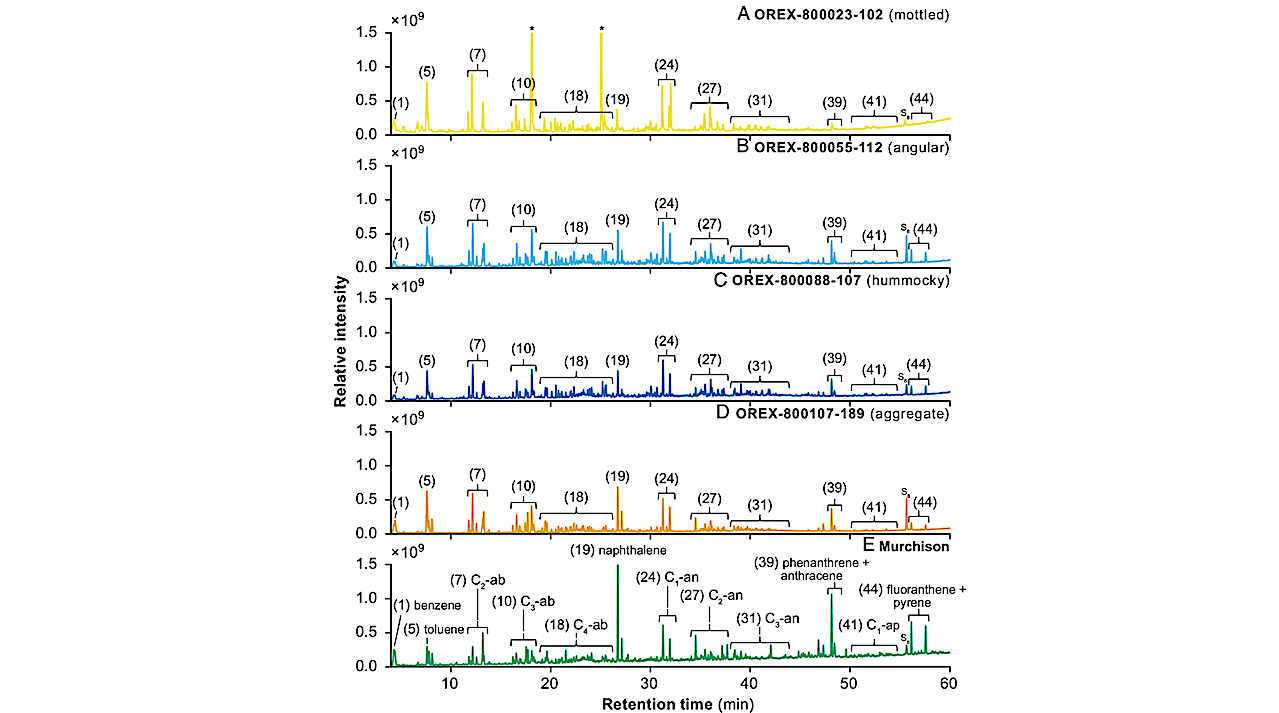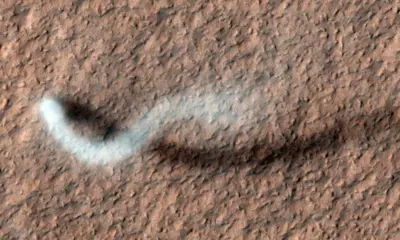Science
NASA’s OSIRIS-REx Reveals Prebiotic Compounds in Asteroid Bennu

NASA’s OSIRIS-REx mission has made significant strides in understanding the origins of life by analyzing samples from the asteroid Bennu. The mission successfully returned pristine samples of Bennu’s regolith to Earth, allowing scientists to study this ancient, carbon-rich material in detail.
Recent findings indicate that the samples contain a variety of prebiotic organic compounds, shedding light on the conditions present in the early Solar System. These analyses reveal critical insights into the abiotic formation of organic materials that may have played a role in the emergence of life on Earth.
Exploring Organic Compounds
Using advanced pyrolysis and wet-chemistry techniques, researchers examined both aggregate material and three distinct stones from the asteroid, which likely correspond to different boulder types observed by the OSIRIS-REx spacecraft. The results from the aggregate analysis aligned with previous studies, which identified five canonical nucleobases alongside 14 of the 20 α-amino acids necessary for protein synthesis in living organisms.
Notably, the analysis also indicated the tentative presence of tryptophan, a fifteenth α-amino acid not previously detected in extraterrestrial samples. This discovery suggests a more complex organic inventory on Bennu than previously understood, highlighting the asteroid’s potential to contribute to our knowledge of life’s building blocks.
Further investigation showed differences in the distribution of soluble and insoluble organics among the various stone types. This variability points to heterogeneous geological processing within Bennu’s parent body, suggesting that the conditions that formed these compounds were not uniform across the asteroid.
Implications for the Origins of Life
The distributions of alkylated polycyclic aromatic hydrocarbons found in the samples resemble those in aqueously altered carbonaceous chondrites. This consistency supports the theory that these compounds originated through abiotic processes involving aqueous reactions.
These findings expand the understanding of how prebiotic organic molecules could form within primitive planetary bodies. Such compounds may have been delivered to Earth and other bodies in the Solar System through impacts, potentially playing a crucial role in the origins of life.
The results of this research are detailed in a study published in the Proceedings of the National Academy of Sciences (PNAS), furthering the discourse on astrobiology and the conditions that led to life on Earth. As scientists continue to analyze the samples from Bennu, the implications of this research could reshape our understanding of life’s beginnings in the cosmos.
-

 Technology4 months ago
Technology4 months agoDiscover the Top 10 Calorie Counting Apps of 2025
-

 Health2 months ago
Health2 months agoBella Hadid Shares Health Update After Treatment for Lyme Disease
-

 Health3 months ago
Health3 months agoErin Bates Shares Recovery Update Following Sepsis Complications
-

 Technology4 weeks ago
Technology4 weeks agoDiscover 2025’s Top GPUs for Exceptional 4K Gaming Performance
-

 Technology2 months ago
Technology2 months agoElectric Moto Influencer Surronster Arrested in Tijuana
-

 Technology4 months ago
Technology4 months agoDiscover How to Reverse Image Search Using ChatGPT Effortlessly
-

 Technology4 months ago
Technology4 months agoMeta Initiates $60B AI Data Center Expansion, Starting in Ohio
-

 Technology4 months ago
Technology4 months agoRecovering a Suspended TikTok Account: A Step-by-Step Guide
-

 Health4 months ago
Health4 months agoTested: Rab Firewall Mountain Jacket Survives Harsh Conditions
-

 Lifestyle4 months ago
Lifestyle4 months agoBelton Family Reunites After Daughter Survives Hill Country Floods
-

 Technology3 months ago
Technology3 months agoUncovering the Top Five Most Challenging Motorcycles to Ride
-

 Technology4 months ago
Technology4 months agoHarmonic Launches AI Chatbot App to Transform Mathematical Reasoning




















